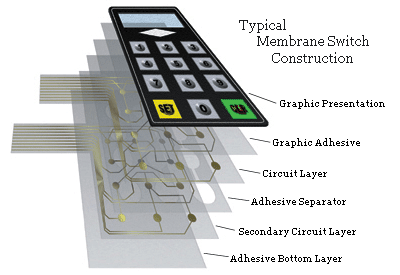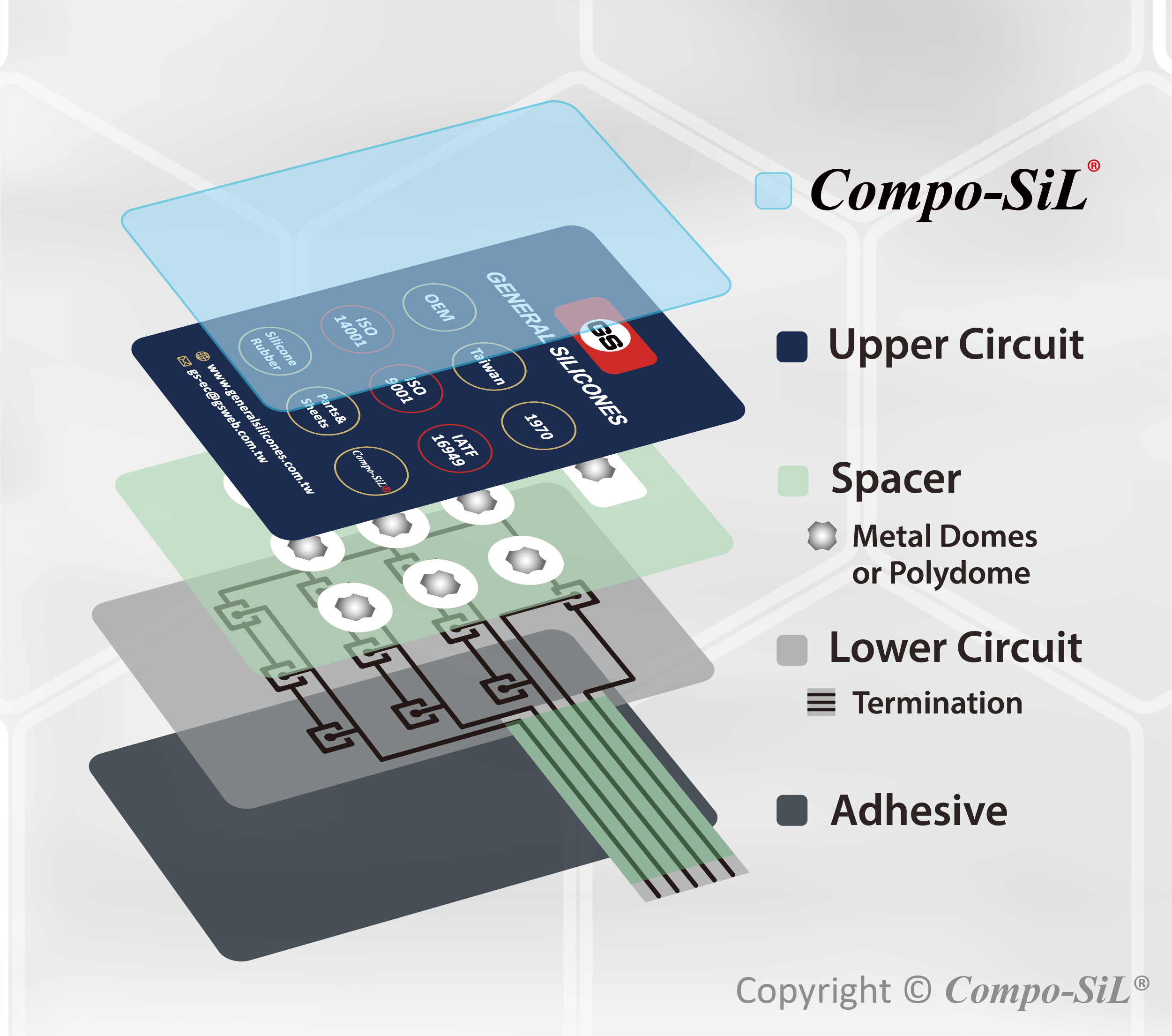How Membrane Switches Are Used in Medical Devices and Equipment
How Membrane Switches Are Used in Medical Devices and Equipment
Blog Article
Understanding the Relevance of Membrane Switches in Interface
Membrane switches are integral elements in the design of reliable individual interfaces, facilitating not just functionality yet likewise boosting aesthetic allure and individual communication. Their special attributes, such as resistance to ecological elements and customizable styles, make them ideal for a varied array of applications throughout several industries. As we check out the different advantages and future fads connected with Membrane modern technology, it ends up being clear that these switches are a lot more than just parts; they represent a merging of technology and practicality. The ramifications of this innovation on user experience deserve examining further.
What Are Membrane Buttons?

The spacer layer, which has glue properties, enables the splitting up of the circuit layer from the overlay, making sure that the button continues to be in a non-activated state till pressed. When stress is used to the overlay, it presses the spacer layer, connecting the space and completing the circuit in the underlying layer. This layout not just minimizes the physical area needed for standard mechanical switches however additionally improves the longevity of the tool, as Membrane switches are usually resistant to dust, dampness, and other environmental elements.
Commonly located in applications varying from consumer electronic devices to medical devices, Membrane switches are integral to modern technology, supplying a effective and user-friendly user interface that aligns with modern style demands.
Benefits of Membrane Buttons
While many switch technologies exist, Membrane Switches offer unique benefits that make them particularly preferable in various applications. One of the key advantages of Membrane switches is their small design, which enables space-saving executions in tools where realty is limited. Their thin account not only improves visual appeal however additionally facilitates light-weight construction.
An additional substantial benefit is their resistance to environmental aspects. Membrane switches are normally secured versus dampness, dust, and impurities, making them optimal for usage sought after settings, such as medical gadgets and commercial equipment. This sturdiness extends the life expectancy of the button, lowering maintenance costs and enhancing integrity.
In addition, Membrane switches can be personalized to meet certain layout needs, incorporating unique graphics and colors that boost individual interaction. Their responsive feedback choices can additionally be customized to give a satisfying user experience. In addition, Membrane buttons are cost-efficient, specifically in high-volume applications, as they can be generated successfully.
Applications in Numerous Industries

In the consumer electronics industry, Membrane switches prevail in tools such as microwaves, washing machines, and remotes. Their responsive feedback and visual options enhance user experience while supplying a sleek, modern-day appearance. Additionally, auto suppliers make use of Membrane switches in control panel controls and infomercial systems, where space is restricted, and user interaction is essential.
Additionally, the industrial field leverages Membrane buttons in control panels for machinery and tools, permitting user-friendly procedure in commonly harsh atmospheres. Their resistance to chemicals and dampness makes certain durability and reliability in these applications. On the whole, the versatility of Membrane Switches adds considerably to their extensive usage, making them important in numerous technical domain names.
Design Factors To Consider for Membrane Buttons

When developing Membrane buttons, several crucial considerations need to be taken into consideration to guarantee ideal capability and customer experience. The selection of products is essential; picking durable, high-grade substrates can improve the switch's durability and resistance to ecological factors such as wetness and temperature level fluctuations.
Secondly, the design of the graphic overlay should focus on quality and convenience of usage. Symbols and text should be clear, and the layout ought to facilitate user-friendly interaction (membrane switches). Furthermore, tactile feedback is crucial; including a tactile dome or other devices can boost the individual experience by providing physical verification of activation
Another crucial variable is the switch's electrical performance. Developers need to guarantee that the conductive traces are correctly designed to decrease resistance and prevent signal interference. This includes analyzing the needed actuation force and making sure compatibility with the electronic parts they will user interface with.

Future Fads in Membrane Innovation
As technology remains to advance, Membrane switches are poised to evolve significantly, driven by developments in materials and producing strategies. One emerging pattern is the incorporation of innovative materials, such as versatile substratums and conductive inks, which improve longevity and decrease the general weight of Membrane switches. These products not just improve the tactile action but likewise permit the design of switches that can stand up to harsher ecological conditions.
Additionally, the assimilation of touch-sensitive technologies is transforming standard Membrane Switches right more tips here into even more click for source interactive customer interfaces. Capacitive touch sensing units installed within Membrane switch panels can offer a much more receptive and user-friendly individual experience, aligning with the growing demand for smooth, modern-day styles in customer electronic devices.
Additionally, advancements in printing techniques, such as electronic and 3D printing, enable quick prototyping and personalization of Membrane buttons. This adaptability permits suppliers to react more quickly to market demands and consumer preferences.
Lastly, sustainability is becoming a significant emphasis, with producers checking out environment-friendly materials and processes. As these trends unfold, the future of Membrane technology guarantees improved performance, aesthetic appeal, and ecological obligation, solidifying their role in innovative interface throughout different sectors.
Verdict
To conclude, Membrane Switches stand for a crucial element in the design of customer interfaces, combining performance with visual versatility. Their advantages, including durability and resistance to ecological elements, make them appropriate for diverse applications throughout different industries. Furthermore, thoughtful layout considerations improve user communication and experience. As advancements in technology continue, the evolution of Membrane switches is anticipated to further refine individual interfaces, driving advancement and enhancing usability in a progressively intricate technical landscape.
Membrane buttons are essential parts in the design of effective customer interfaces, facilitating not just functionality yet also improving visual appeal and user communication.Membrane Switches serve as an essential element in various customer interfaces, facilitating a seamless communication in between customers and electronic devices.While many button modern technologies exist, Membrane Switches offer unique advantages that make them especially preferable in numerous applications.Moreover, Membrane buttons can be customized to meet particular style demands, integrating one-of-a-kind graphics and shades that boost customer interaction.In final thought, Membrane Switches represent an essential component in the design of individual interfaces, integrating performance with aesthetic versatility.
Report this page